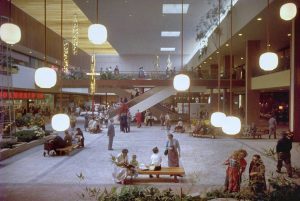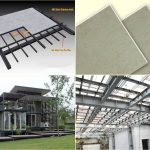Victor David Gruen, born Viktor David Grünbaum
Victor David Gruen, born Viktor David Grünbaum
Victor David Gruen, originally named Viktor David Grünbaum, was an Austrian-born American architect and urban planner. He was born on July 18, 1903, in Vienna, Austria, and later became a naturalized American citizen. Gruen is best known for his pioneering work in the field of shopping mall design and urban planning. Here are some key highlights of his life and career:

Victor David Gruen, born Viktor David Grünbaum
- Early Life and Education: Gruen studied architecture in Vienna, where he was influenced by modernist and Bauhaus design principles. He graduated from the Vienna Academy of Fine Arts.
- Emigration to the United States: Due to the rise of Nazism in Europe, Gruen emigrated to the United States in 1938, eventually settling in New York City. He changed his name from Viktor David Grünbaum to Victor David Gruen to better adapt to his new home.
- Architectural Career: Gruen established himself as an architect in the United States, working on various projects, including residential buildings and retail spaces. He became known for his innovative designs that focused on creating pleasant and functional environments for people.
- Pioneering Shopping Mall Design: Gruen is often credited with pioneering the design of the modern shopping mall. His most famous work in this regard is the design of Southdale Center, which opened in Edina, Minnesota, in 1956. Southdale Center is considered one of the first enclosed shopping malls in the United States and set the template for future mall designs.
- Urban Planning: Beyond shopping malls, Gruen was also interested in urban planning. He advocated for pedestrian-friendly urban environments and city centers. He believed that well-designed urban spaces could enhance the quality of life for residents and visitors.
- Impact: Victor Gruen’s ideas and designs had a profound impact on American retail and urban planning. His vision of creating attractive, walkable spaces for shopping and leisure influenced the development of shopping centers and downtown revitalization efforts.
- Later Life: In his later years, Gruen expressed regret that his shopping mall designs had become synonymous with suburban sprawl and car-dependent lifestyles. He believed that his original vision for shopping centers as community hubs had been largely lost.
Victor David Gruen passed away on February 14, 1980, in Vienna, Austria. While his work in shopping mall design has been both celebrated and critiqued, his legacy continues to influence the fields of architecture, urban planning, and retail design to this day.
Austrian architect
Victor David Gruen, born Viktor David Grünbaum[1] (July 18, 1903 – February 14, 1980), was an Austrian-American architect best known as a pioneer in the design of shopping malls in the United States.[2] He is also noted for his urban revitalization proposals, described in his writings and applied in master plans such as for Fort Worth, Texas (1955),[3] Kalamazoo, Michigan (1958) and Fresno, California (1965).[1] An advocate of prioritizing pedestrians over cars in urban cores, he was also the designer of the first outdoor pedestrian mall in the United States, the Kalamazoo Mall.
Victor Gruen was born on July 18, 1903, in a middle-class Jewish family in Vienna, Austria. He studied architecture at the Vienna Academy of Fine Arts. A committed socialist, from 1926 until 1934 he ran the ” political cabaret at the Naschmarkt ” – theatre. At that time he came to know Felix Slavik, the future mayor of Vienna, and they became friends .
As an architect he worked for Peter Behrens, and in 1933 opened his own architectural firm in Vienna. [ 1 ] His firm specialized in remodeling of shops and apartments. [ 6 ]
When Germany annexed Austria in 1938, he emigrated to the United States. Short and stout, he landed “with an architect’s degree, eight dollars, and no English.”[7] Arriving in New York he changed his name to Gruen from Grünbaum and started to work as a draftsman. After the success of his design for the Lederer leather-goods boutique on Fifth Avenue, he received further commissions for the design of shops, including Ciro’s on Fifth Avenue, Steckler’s on Broadway, Paris Decorators on the Bronx Concourse, and eleven branches of the clothing chain Grayson’s.[7]
Bạn đang đọc: Victor Gruen – Wikipedia
In 1941 Gruen moved to Los Angeles.[9] He was naturalized as a US citizen in 1943.[10] In 1951, he founded the architectural firm “Victor Gruen Associates”, which was soon to become one of the major planning offices of that time. After the war, he designed the first suburban open-air shopping facility called Northland Mall near Detroit in 1954. After the success of the first project, he designed his best-known work for the owners of Dayton Department stores, the 800,000-square-foot (74,000 m2) Southdale Mall in Edina, Minnesota, the first enclosed shopping mall in the country. Opening in 1956, Southdale was meant as the kernel of a full-fledged community. The mall was commercially successful, but the original design was never fully realized, as the intended apartment buildings, schools, medical facilities, park and lake were not built. Because he invented the modern mall, Malcolm Gladwell, writing in The New Yorker, suggested that “Victor Gruen may well have been the most influential architect of the twentieth century.”[7]
Until the mid-1970s, his office designed over fifty shopping malls in the United States.[11] Gruen was the principal architect for a luxury housing development built on the 48-acre (190,000 m2) site of Boston, Massachusetts’ former West End neighborhood. The first of several Gruen towers and plazas was completed in 1962. This development, known as Charles River Park is regarded by many as a dramatically ruthless re-imagining of a former immigrant tenement neighborhood[12] (Gans, O’Conner, The Hub). In 1956, Gruen drafted a comprehensive revitalization plan for the central business district of downtown Fort Worth, Texas, but most components of the plan were never realized.[3] Dr. ETH Ing. Walid Jabri, the architect and structural engineer, designed the 55,000 square-meter business complex Centre Gefinor, which was built in the late 1960s on Rue Clémenceau in Beirut, Lebanon for which Victor Gruen designed the complete commercial area on the ground floor and the mezzanine after the completion of the skeleton.[13] Gruen also designed the Greengate Mall in Greensburg, Pennsylvania, which opened in 1965, as well as the Lakehurst Mall in 1971 for Waukegan, Illinois.
In 1968, he returned to Vienna, where he engaged in the gradual transformation of the inner city into a pedestrian zone, of which only some parts have been implemented, including Kärntner Straße and Graben.[11]
In a speech in London in 1978, Gruen disavowed shopping mall developments as having “bastardized” his ideas:[7][14] “I refuse to pay alimony for those bastard developments. They destroyed our cities.”[15][16] Gruen died on February 14, 1980.
He was married four times and hade two children.[citation needed]Gruen’s book The Heart of our Cities: The Urban Crisis, Diagnosis and Cure was a big influence on Walt Disney’s city planning ambitions and his ideas for the original EPCOT.[17]
In 1963, on his 21 st birthday, his son Thành Phố New York attorney Michael S. Gruen ( then a Harvard undergraduate ) was given a painting ” Schloss Kammer am Attersee II ” by Gustav Klimt. [ 18 ] While ownership of the painting was given to his son in 1963, the elder Gruen continued to hang it in his living room and even paid for insurance and repairs. Upon Gruen’s death in 1980, his widow, Kemija, refused to surrender the painting to Michael, resulting in a landmark case in the Thành Phố New York Supreme Court and Court of Appeals. The Court of Appeals ruled the basis of inter vivos gifts, including the plaintiff having the burden of proof to a clear and convincing standard that the chattel was a gift and the required elements of a gift. Kemija Gruen claimed that if the painting was to be given after death, even if such arrangement was made years earlier, then the will, not a letter, would be instructive as to disposition. [ 18 ] Michael Gruen was eventually awarded USD 2.5 million .
Notes
Source: https://suadieuhoa.edu.vn
Category : American















